What’s Showing at Art Basel OVR: Pioneers
By The Editors
It’s been a year since Art Basel went online for the first time after its Hong Kong edition was upended by the pandemic. Now back for its sixth Online Viewing Room (OVR), Pioneers, the fair is foregrounding artists who broke new ground, whether in political or aesthetic and conceptual terms. Art Basel is hosting 100 galleries from around the world, showing a wide range of works by legendary figures of 20th century art, innovative contemporary practitioners, as well as lesser-known artists whose works were ahead of their time. Here’s a look at the artists being shown by ten galleries at OVR: Pioneers.

KRISHNA REDDY, Life Movement, 1972, multicolor viscosity print on paper, 50.8 × 65.3 cm. Courtesy Experimenter, Kolkata.
Experimenter, Kolkata
Presented alongside a series of works on paper made between 1958–72 by the Indian modernist Krishna Reddy (1925–2018), Life Movement (1972) exemplifies the artist’s rigorous experimentation with printmaking, which led to his discovery of a multicolor viscosity printing technique that allowed numerous colors to be printed simultaneously onto a single plate. Evoking broken color techniques in painting, white lines converge to form stick figures in Life Movement, creating a sense of depth to a medium often regarded as two-dimensional.
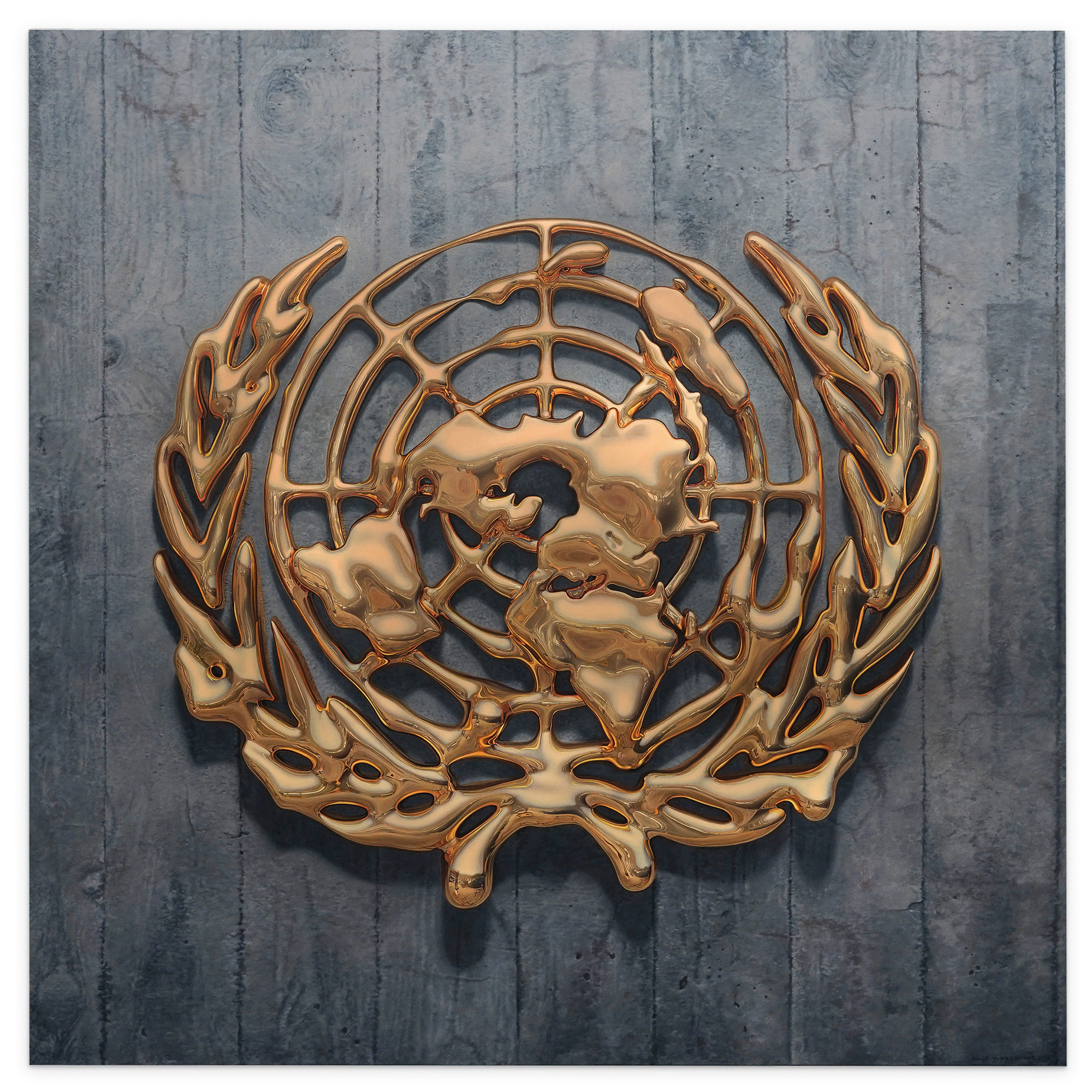
RUDI MANTOFANI, Simfoni Bumi Langit (Gold Series No.7), 2020, acrylic on canvas, 200 × 200 cm. Courtesy Gajah Gallery, Singapore.
Gajah Gallery, Singapore
Exhibited by Gajah Gallery, the paintings and sculptures of Indonesian collective Kelompok Seni Rupa Jendela—whose members include Handiwirman Saputra, Jumaldi Alfi, Rudi Mantofani, Yunizar, and Yusra Martunus—reflect the sensory play and collaboration that forms the basis of their creative process. Among the works on offer, Rudi Mantofani’s acrylic-on-canvas Simfoni Bumi Langit (Gold Series No.7) (2020) shatters viewers’ sense of material and form as the hyperrealist painting of a gold United Nations emblem set against a wood-paneled background appears almost sculptural at first glance.
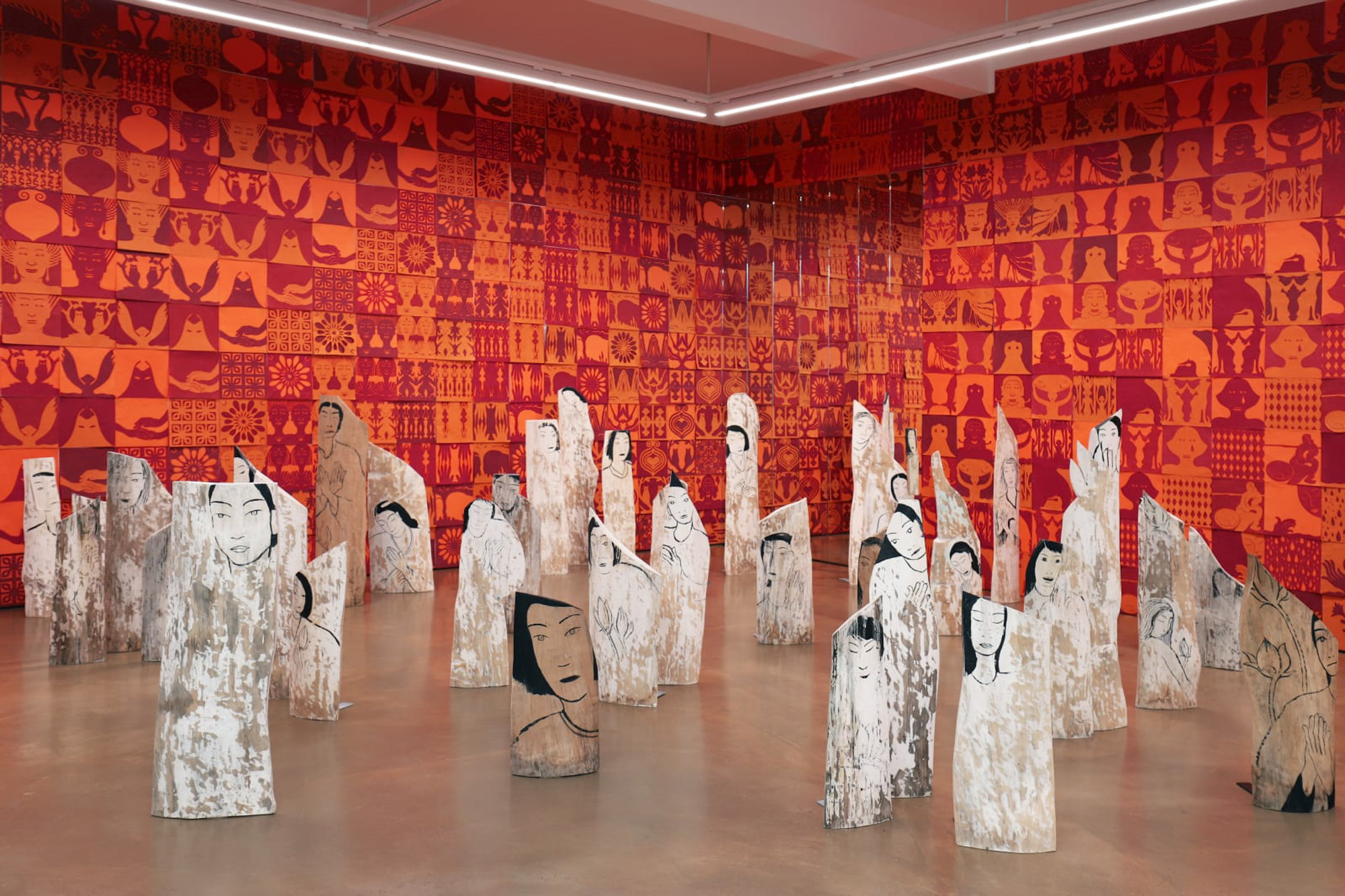
YUN SUKNAM, Red Room, 2021, mixed media installation, dimensions variable. Courtesy Hakgojae Gallery, Seoul.
Hakgojae Gallery, Seoul
In tandem with their solo exhibition of Yun Suknam, Hakgojae Gallery is offering a selection of mixed-media works by the so-called godmother of Korean feminist art. Shown online and at the Seoul gallery, Yun’s installation Red Room (2021) comprises 50 wooden planks bearing portraits of Korean women who fought for Independence during the Japanese colonial era (1910–45). Set against a blood-red and orange background consisting of roughly 850 hanji tiles and 70 mirrors, these totemic portraits pay homage to the sacrifices of these largely forgotten heroines.
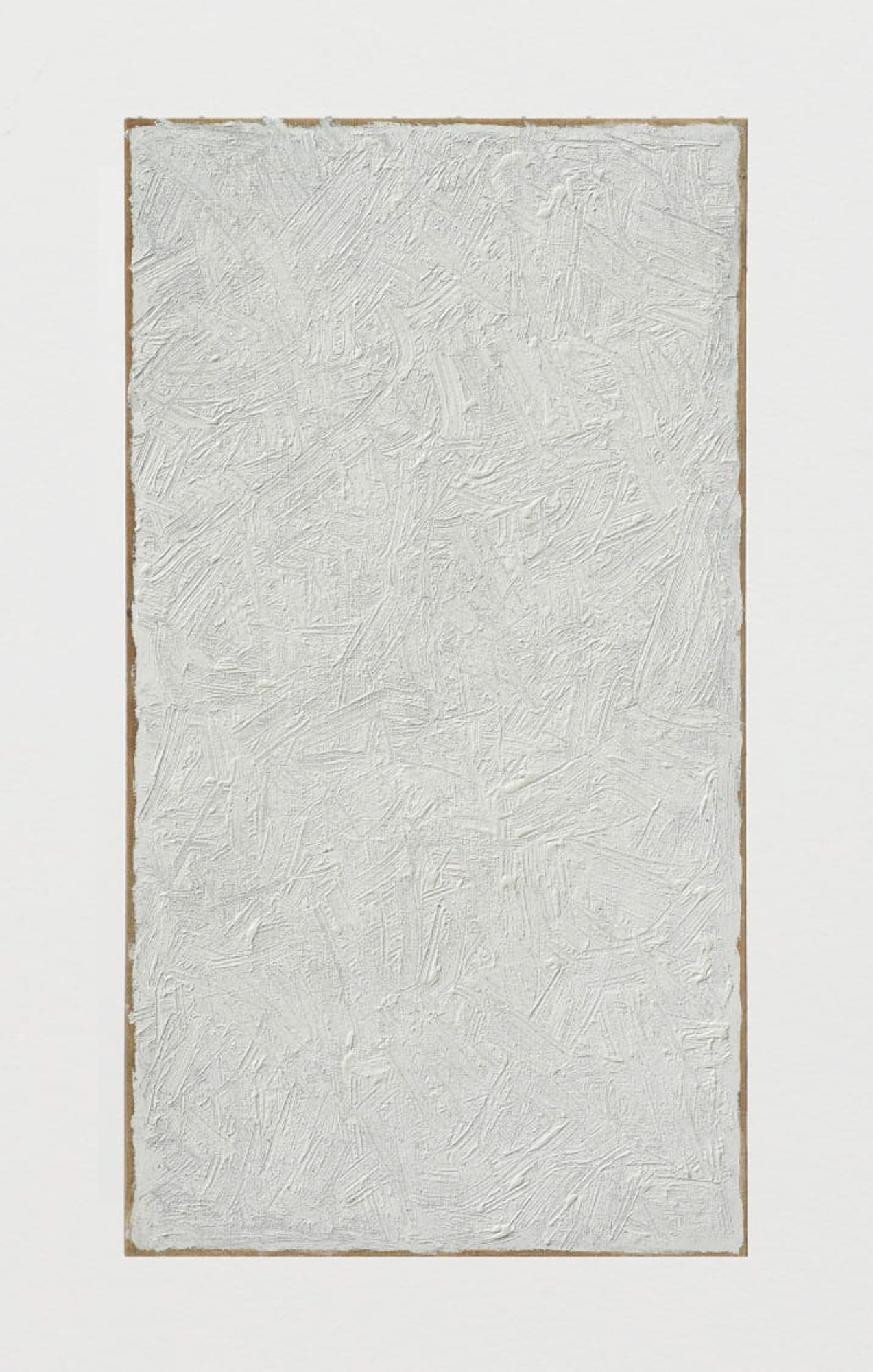
HA CHONG-HYUN, Conjunction 85-50, 1985, oil on hemp cloth, 220 × 120 cm. Courtesy Kukje Gallery, Seoul / Busan.
Kukje Gallery, Seoul/Busan
Known for his signature method of pushing oil paint through a burlap canvas to create textured monochrome abstractions, Ha Chong-Hyun is among the foremost avant-gardists who emerged in the Korean modern art scene at the end of World War II. Kukje is showcasing early works from Ha’s Conjunction series, initiated in the early 1970s, including Conjunction 74-17 (1974), featuring a diffuse white rectangle with a border of unpainted hemp, and Conjunction 85-101 (1985), rendered in sage green.
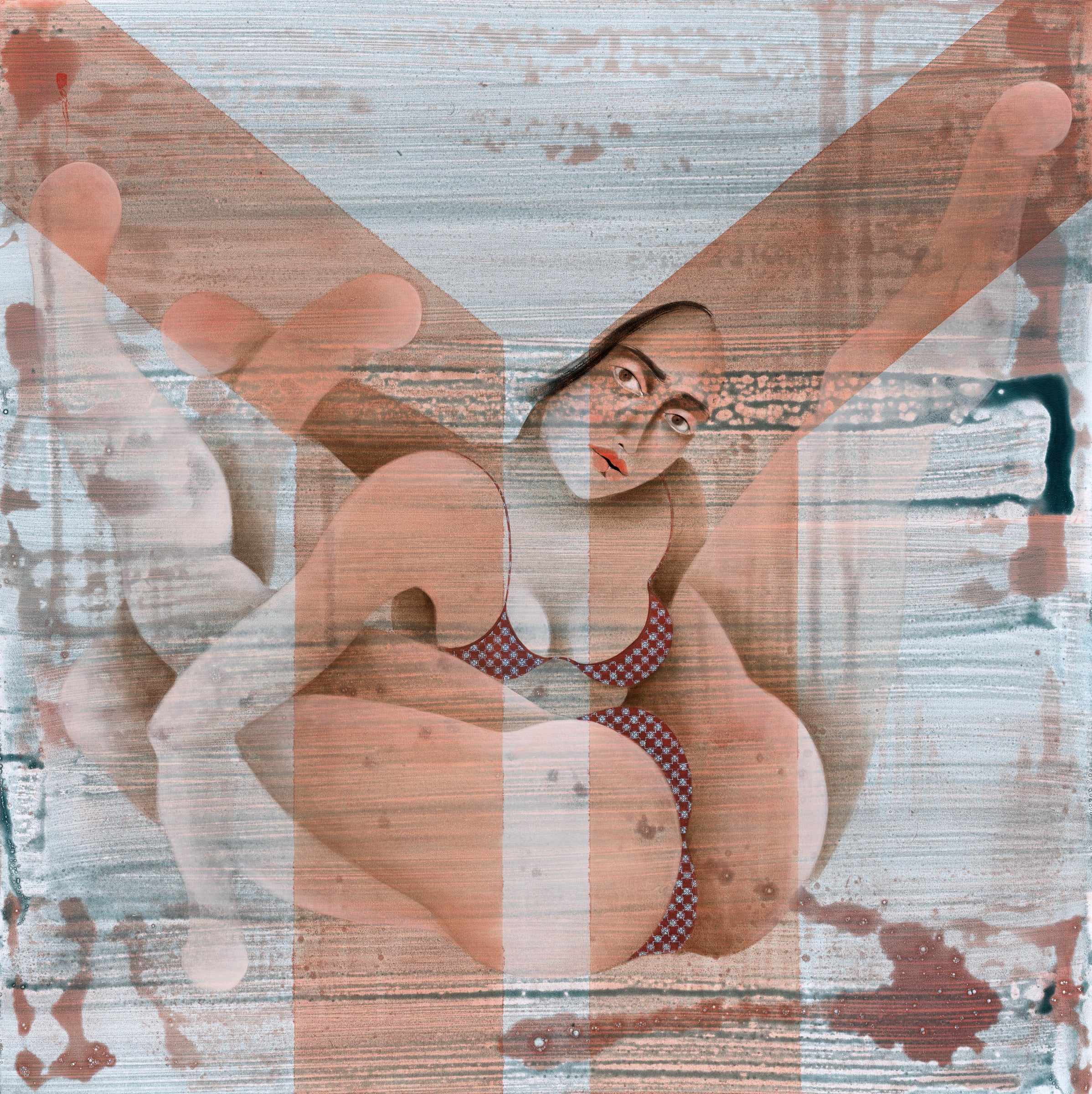
HAYV KAHRAMAN, Red AntiBody, 2020, oil and dried pigment on panel, 127 × 127 cm. Courtesy Pilar Corrias, London.
Pilar Corrias, London
Los Angeles-based, Kurdish-Iraqi painter Hayv Kahraman explores the politics of exclusion and otherness in her paintings of contorted bodies. Produced early on in the pandemic, Kahraman’s latest series, The touch of Otherness (second iteration) (2020–21), visually references the virus, as in Red AntiBody (2020), in which a woman with four legs is positioned in the Y-shape of the protein.
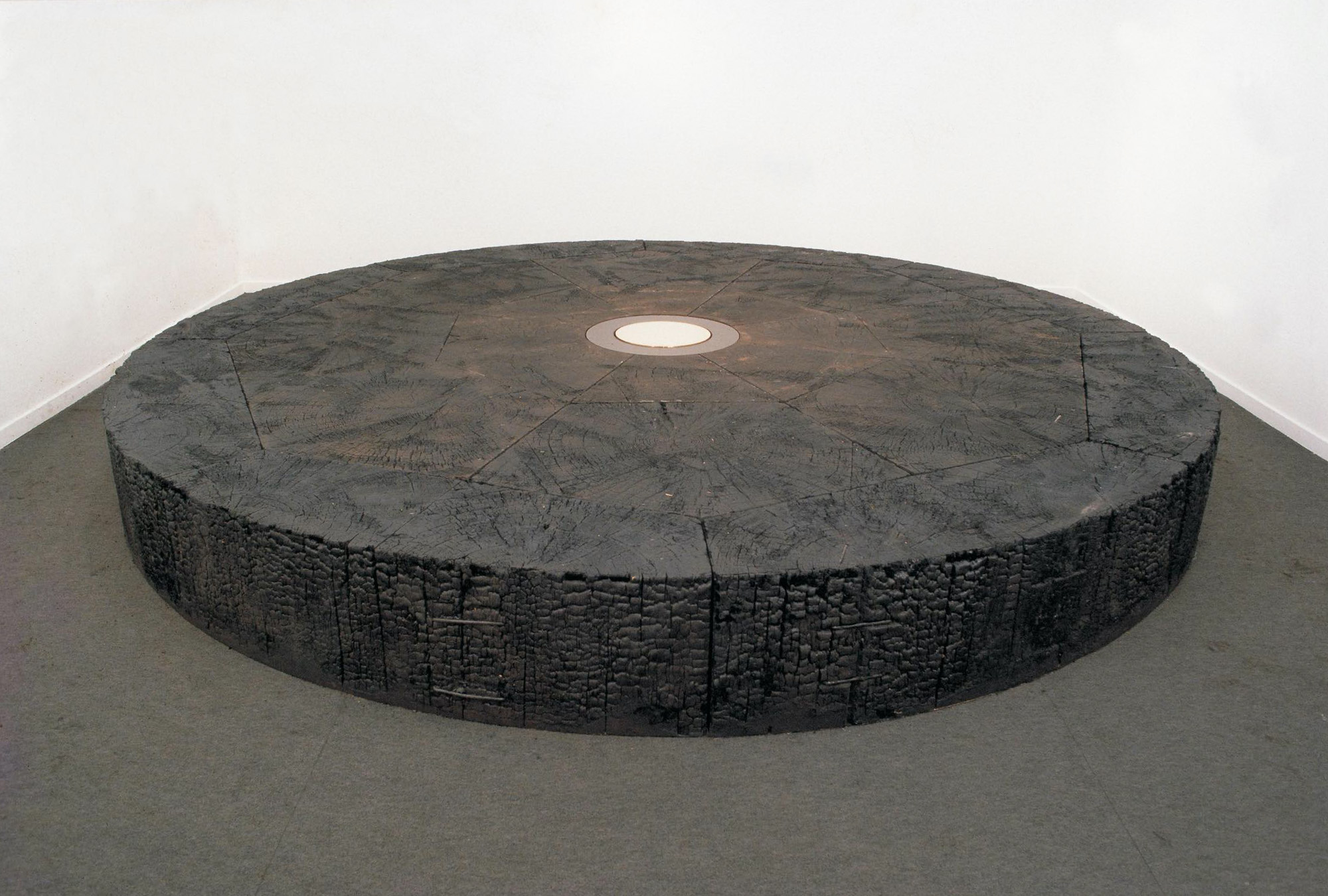
TOSHIKATSU ENDO, Untitled, 1991, wood, water, brass, tar, (fire), 42 × 400 × 400 cm. Courtesy SCAI The Bathhouse, Tokyo.
SCAI The Bathhouse, Tokyo
A leading figure of Japanese post-minimalism, sculptor Toshikatsu Endo made waves in the 1990s with his elemental, large-scale installations. SCAI The Bathhouse is featuring his iconic Untitled (1991) wood sculpture, which was soaked in tar and burned, invoking the power of nature as well as primordial rituals of sacrifice.

SAM DURANT, Heads, Statues, Arm and Legs, 2020, inkjet print with pigment ink on gampi paper, casted on STPI handmade cement paper, 65 × 75.5 × 7 cm. Courtesy STPI, Singapore.
STPI, Singapore
Sam Durant’s background in grassroots social-justice activism informs his multimedia artistic practice, which often portrays dramatic and heated scenes of destruction from history. From his new, large-scale, mixed-media series Iconoclasm—developed during a studio residency at STPI in 2020—Heads, Statues, Arm and Legs (2020) is a set of three framed collages depicting dismembered, contorted limbs and excised bodies of colonial and religious icons, questioning whom we memorialize.

SUNIL GUPTA, Untitled #22 from Cruising 1960s Delhi, 1982, archival inkjet print, 101.6 × 152.4 cm. Courtesy Vadehra Art Gallery, New Delhi.
Vadehra Art Gallery, New Delhi
Sunil Gupta’s black-and-white photographic series Cruising 1960s Delhi (1982) documents the artist’s revisitations of local cruising sites around his hometown, New Delhi, where he would go as a gay teen. The desolate images of empty stairways (Untitled #22) and decrepit monuments (Untitled #24) form a visceral personal archive of his sexual awakening.
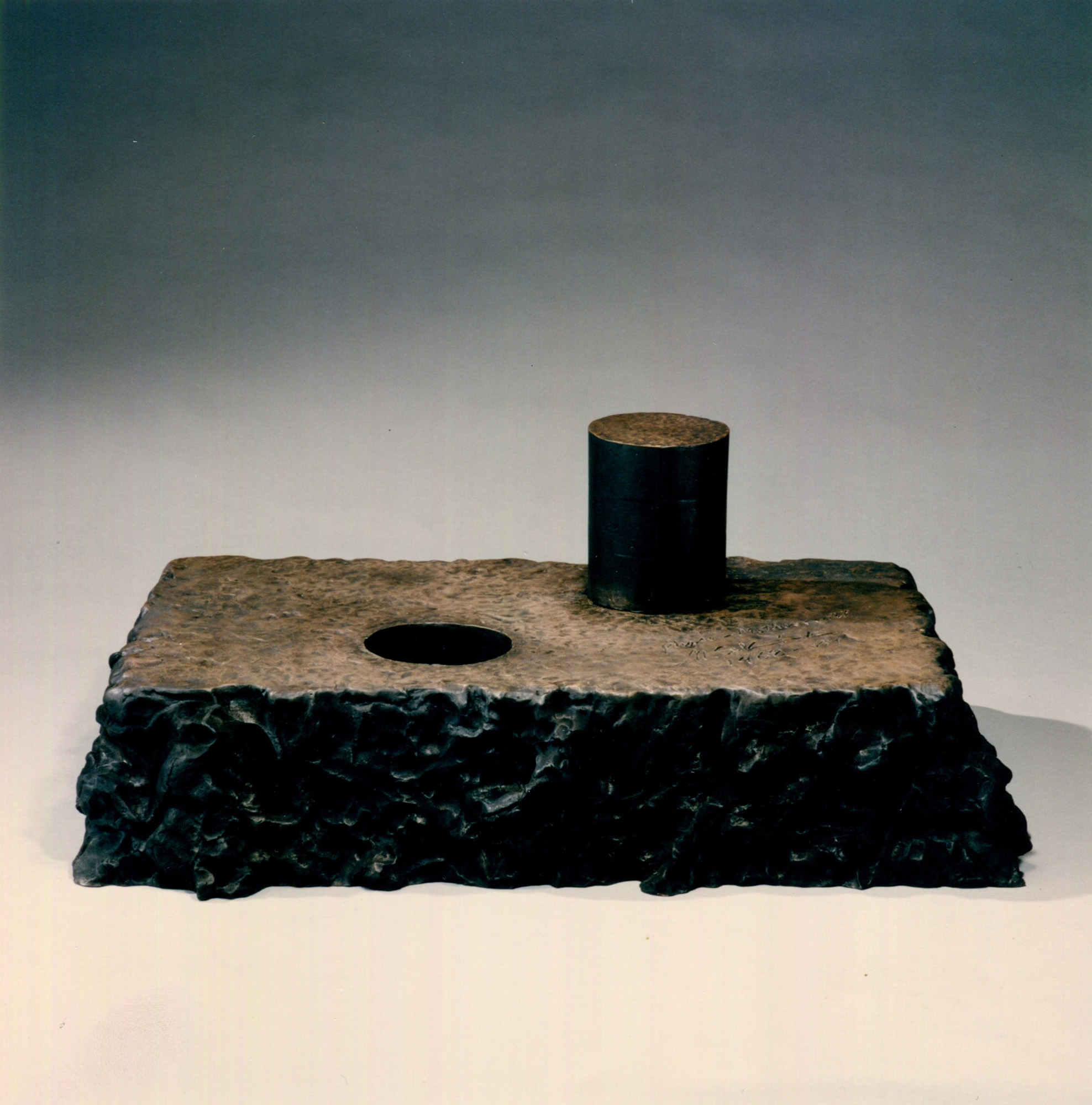
NOBUO SEKINE, _Phase
Watanuki Ltd./Toki-no-Wasuremono, Tokyo
The late Mono-ha luminary Nobuo Sekine’s sculpture Phase – Mother Earth (1989) is a bronze-cast rendition of his breakthrough outdoor installation Phase – Mother Earthat Kobe’s Suma Rikyu Park for the First Open Air Contemporary Sculpture Exhibition in 1968. The original work consisted of a nearly three-meter-deep hole in the ground with the corresponding cylinder of dirt placed alongside it, exemplifying Mono-ha concerns with the relations between space and unadulterated material.

PINAREE SANPITAK, Temporary Insanity, 2004, silk by Jim Thompson, synthetic fiber, battery, motor, propeller, sound device, dimensions variable. Courtesy Yavuz Gallery, Singapore / Sydney.
Yavuz Gallery, Singapore/Sydney
Yavuz Gallery is surveying the past three decades of revered Thai conceptualist Pinaree Sanpitak’s practice. On view is the kinetic installation Temporary Insanity (2004), comprising hundreds of orange, red, and yellow soft sculptures in the shape of breast stupas—a recurring motif of the divine feminine in the artist’s work.
Art Basel’s OVR: Pioneers is online until March 28, 2021.
To read more of ArtAsiaPacific’s articles, visit our Digital Library.







